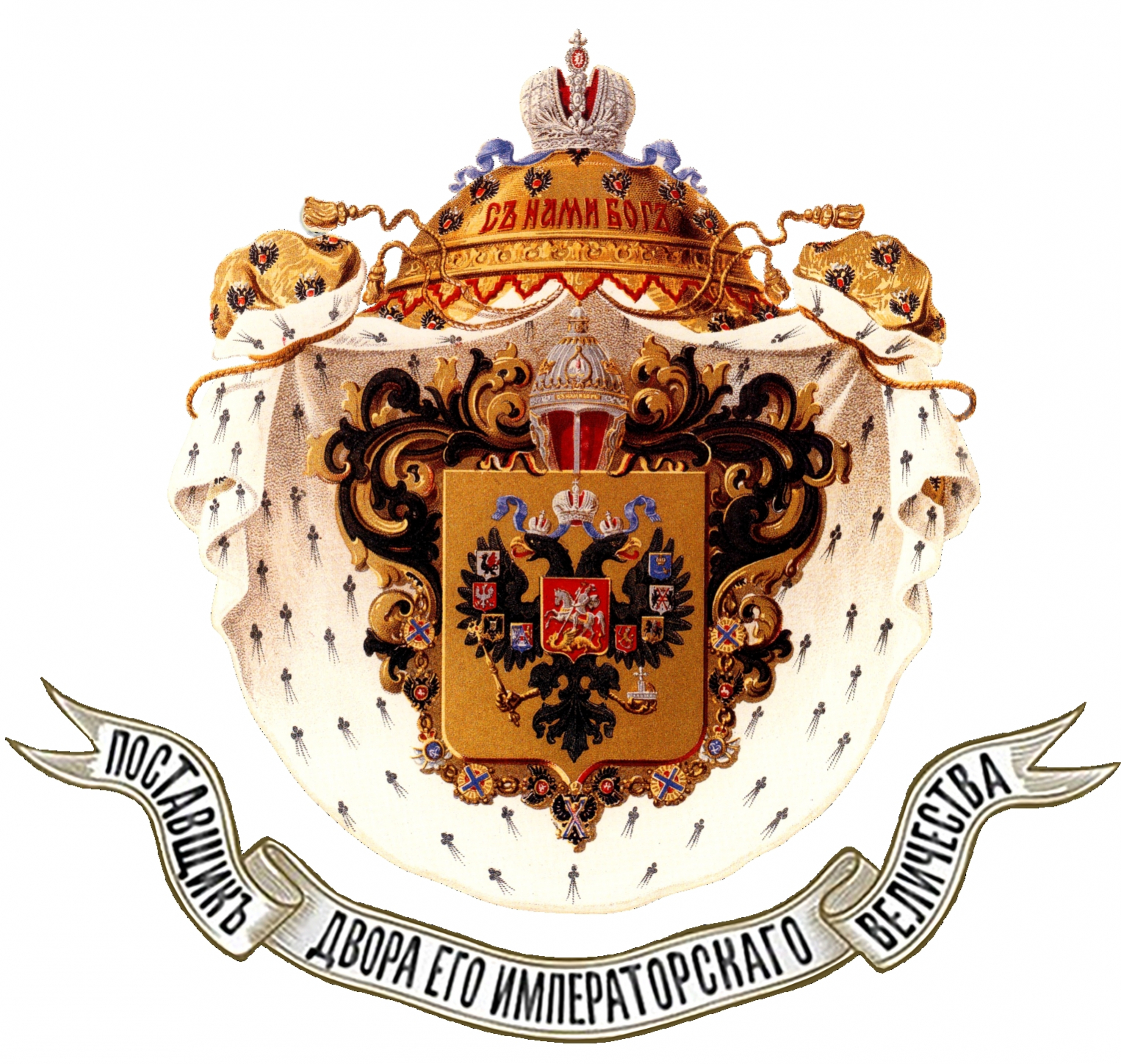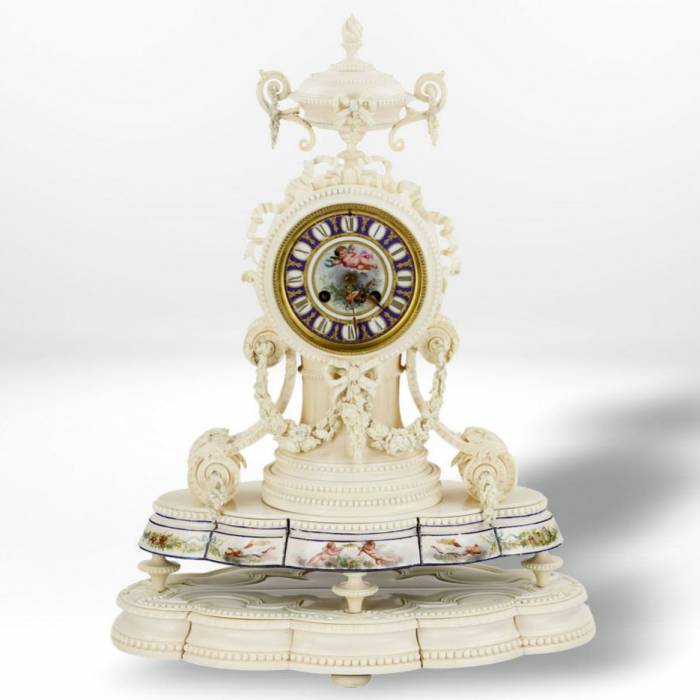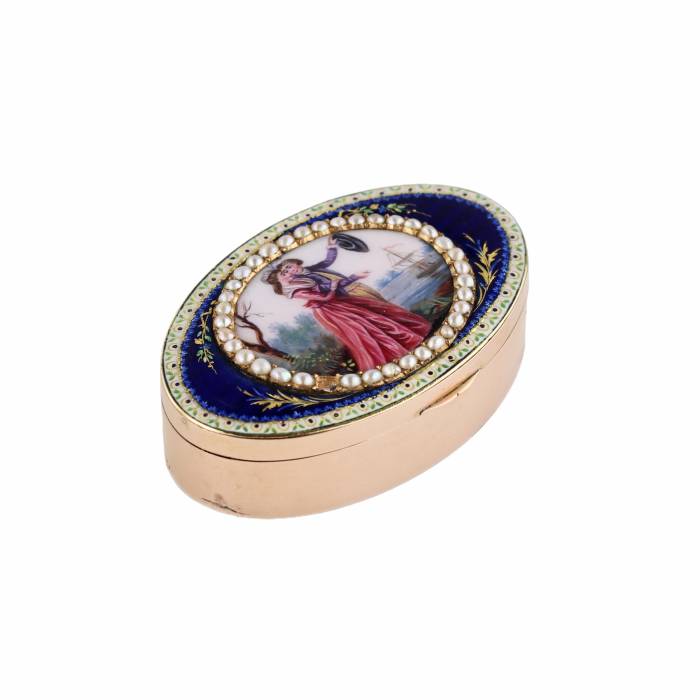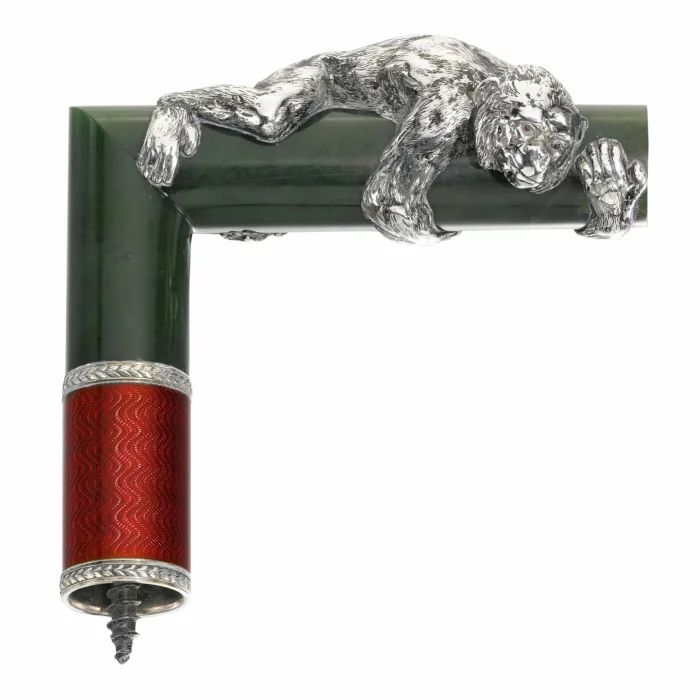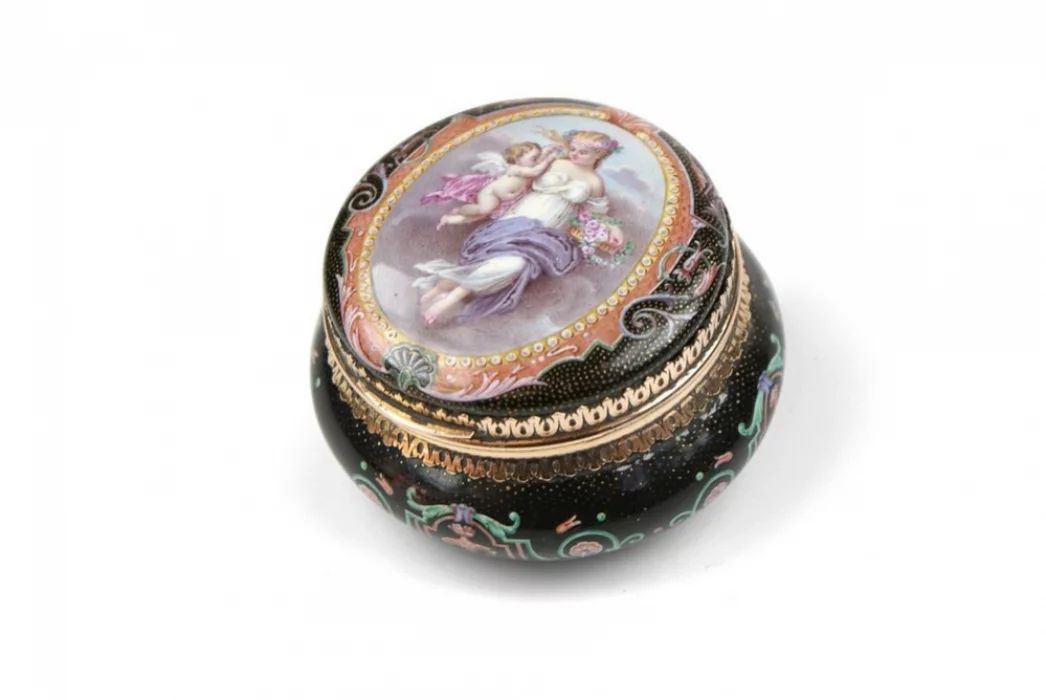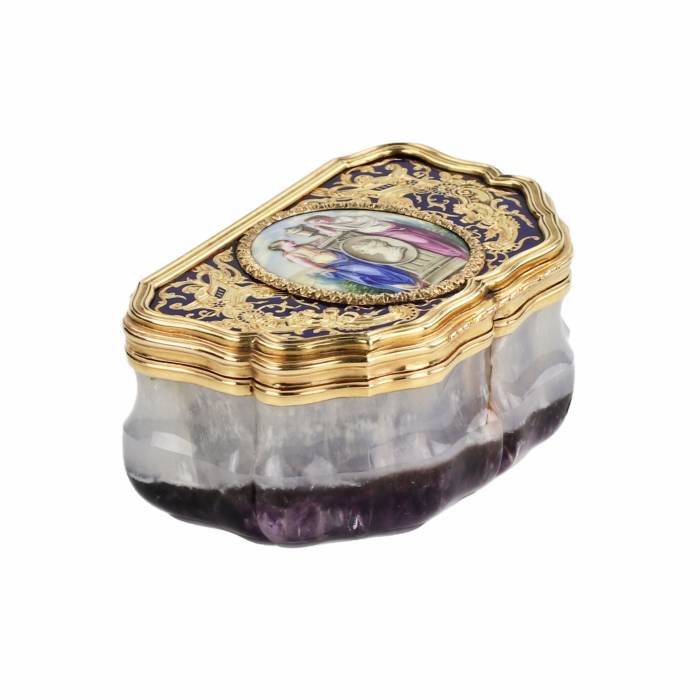
AntiqonART consultant will contact you within one business day after receiving your request.
Thank you for your request!
Our consultant will contact you soon.

AntiqonART consultant will contact you within one business day after receiving your request.

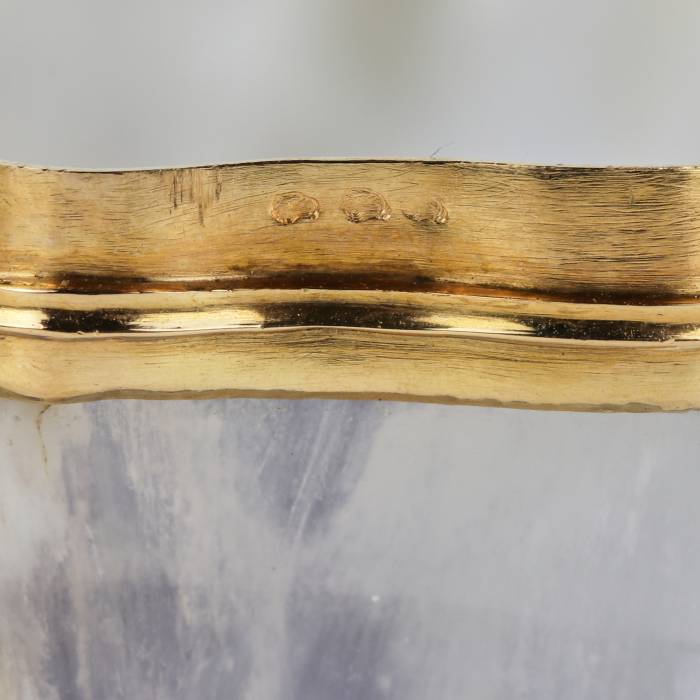

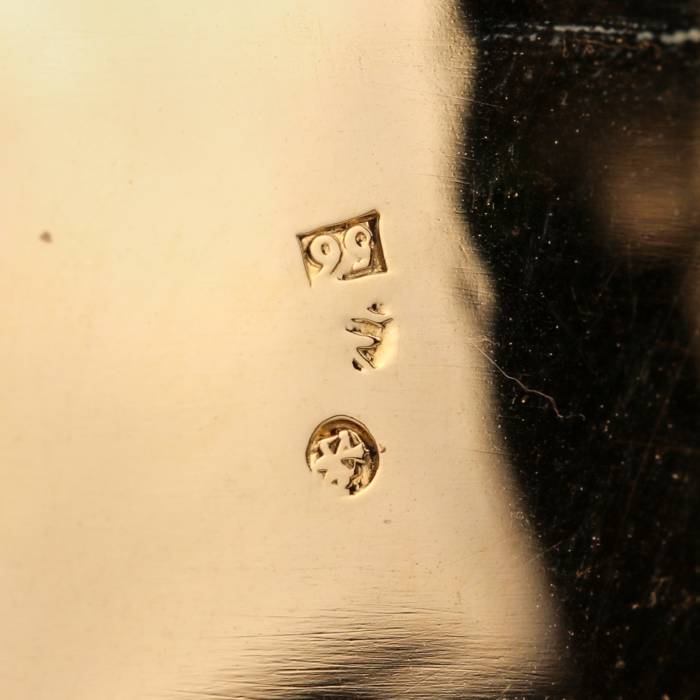
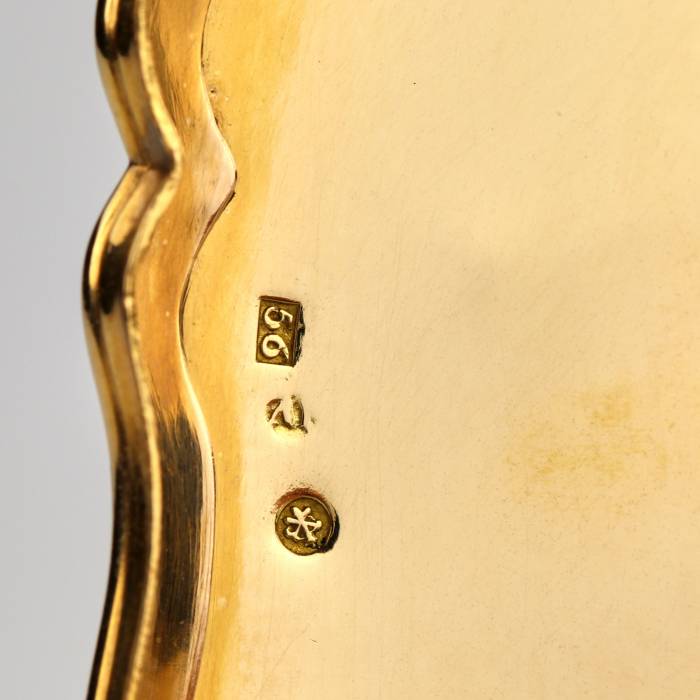
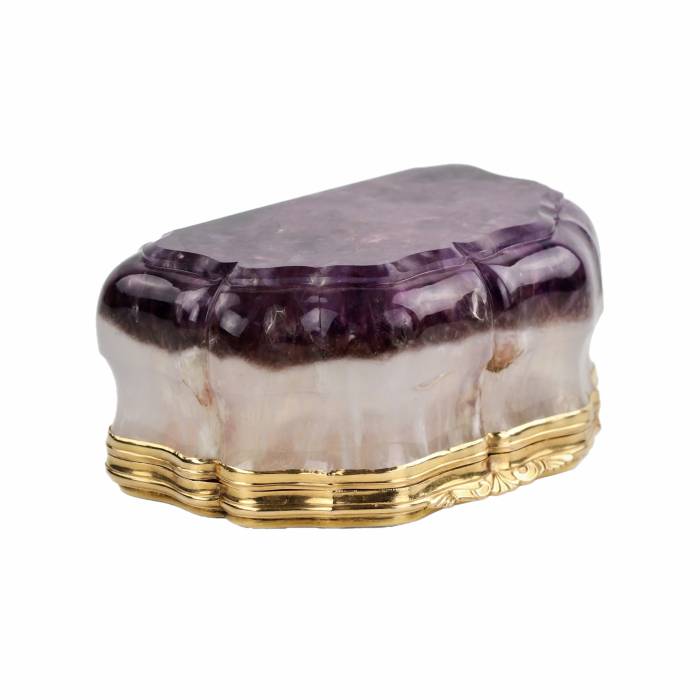
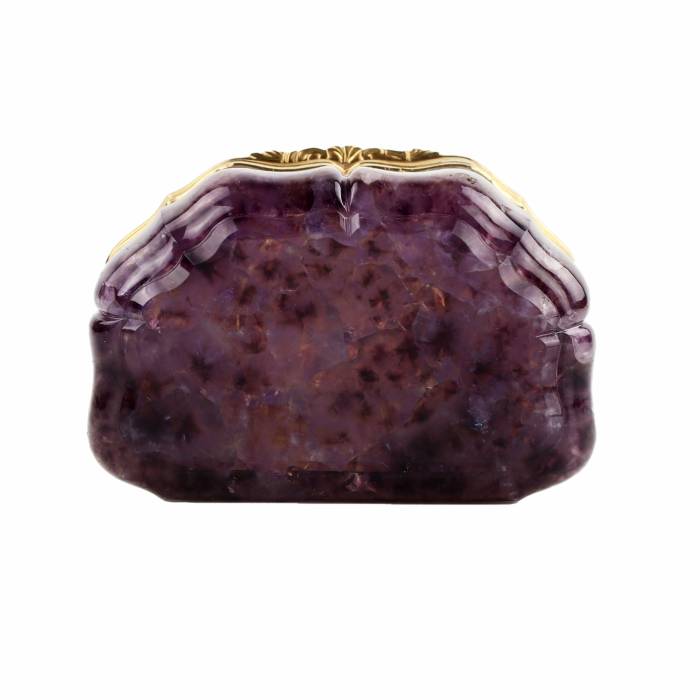
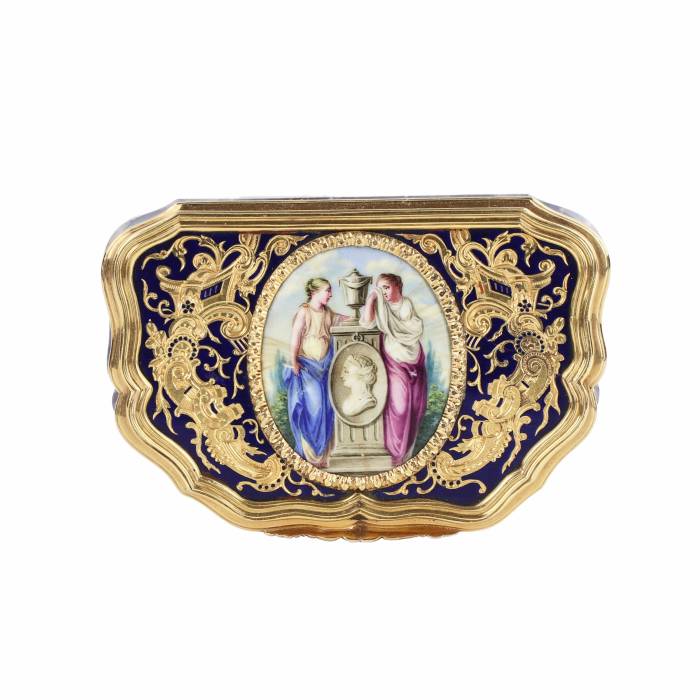
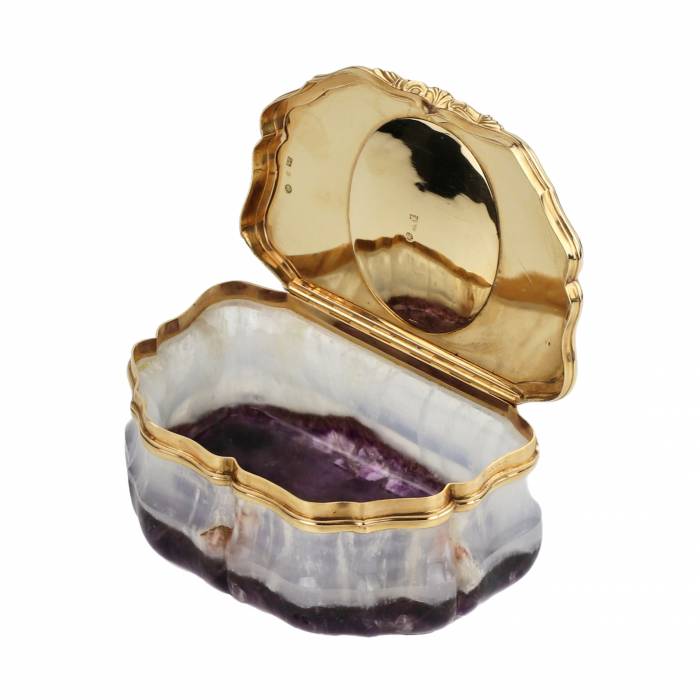
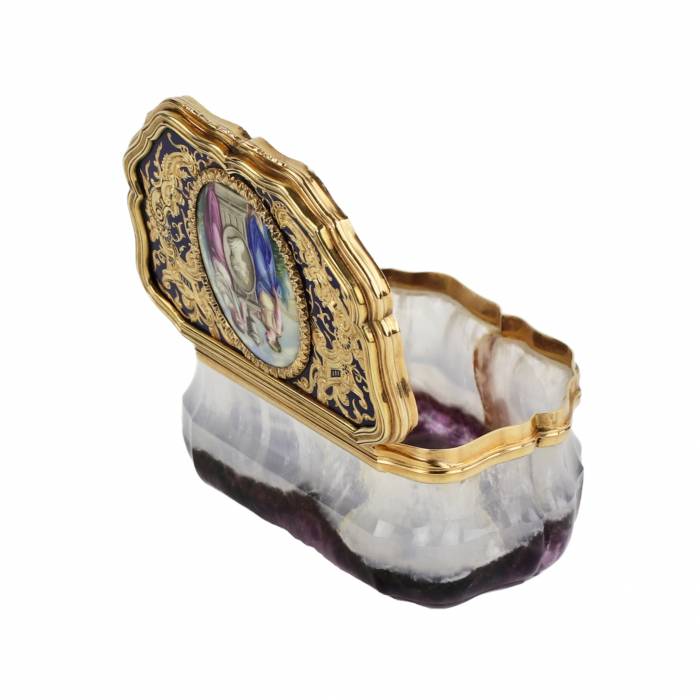
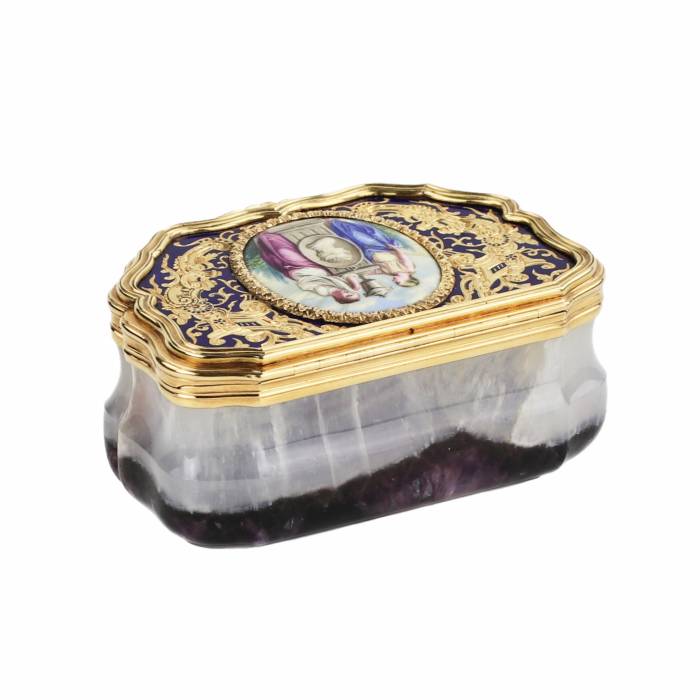
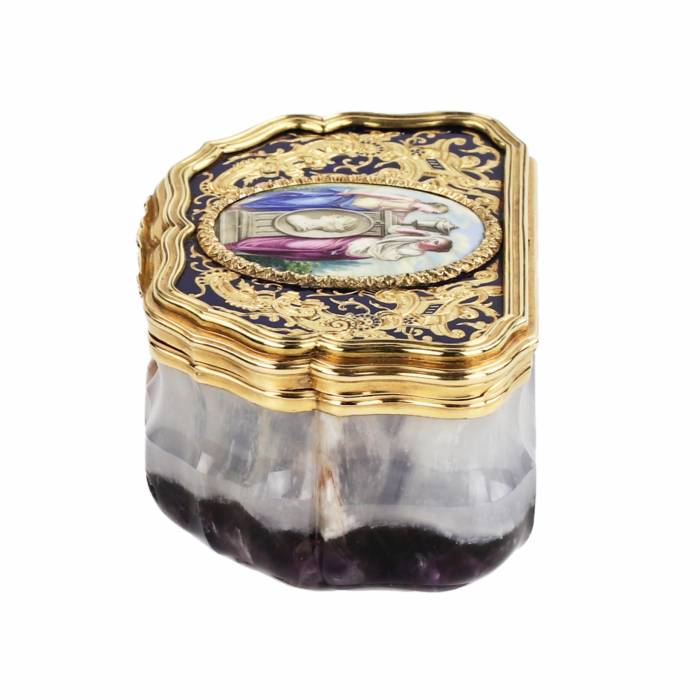
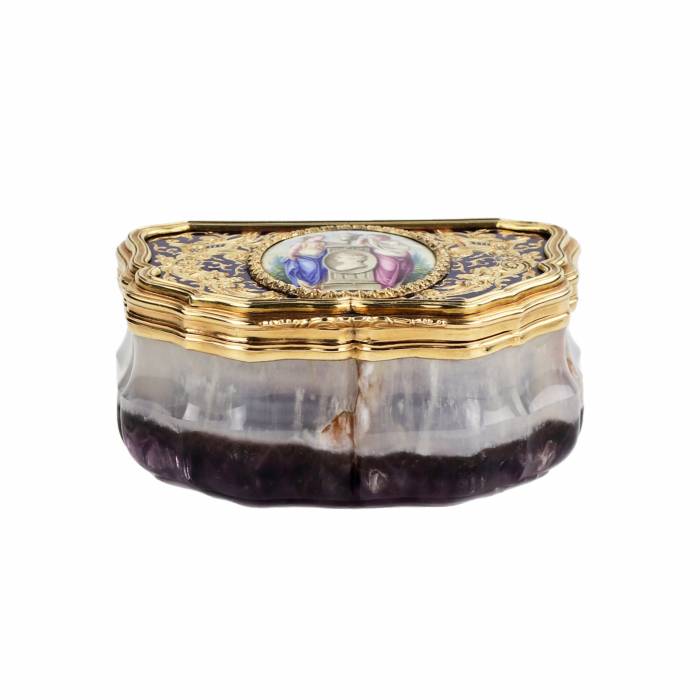













A unique snuff box made of solid amethyst with an engraved gold lid and a handmade enamel medallion. Luxurious and majestic incarnation of the baroque universe. The fullness of life in the standard baroque motifs: shells, waves and currencies, meet with a slight sadness of remembrance, in a medallion. The elements of feelings, nature, unbridled passions coexist with the inevitability of fate and the will of fate. Enjoying luxury, a holiday on the verge of sadness - this is a special cocktail that baroque gives with every touch of a snuffbox.
Hallmarks: 56 (gold proof), hallmark of the city of St. Petersburg, imported French hallmark (used from 1838 to the present), poorly readable hallmark of the master, presumably Keibel.
The Keibel workshop (operating from 1768 to 1910) is considered one of the most significant jewelry houses of the Russian Empire, specializing in the manufacture of gold and silver items, as well as the manufacture of orders.
Total weight 163 gr.
